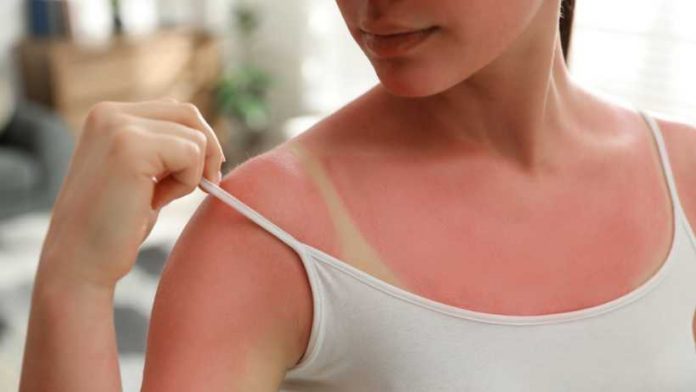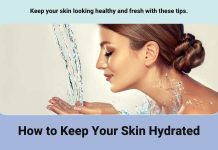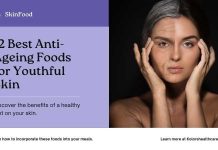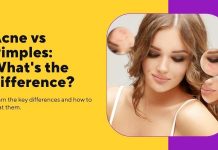Enjoing on a beach is a great way to enjoy the vacation. You might have also noticed that the body parts exposed to the sun, like your feet, arms, legs, neck, face, and back two shades darker than before. It is the effect of sun tan. You can always get rid of sun tan by trying a few home remedies and skin care products or by opting for safe, professional treatments. Read on to learn more about sun tan, its causes, types, effects, prevention, remedies, and professional treatment to flaunt brighter skin like before.
What is Sun Tan?
When your skin cells are prone to the damage caused by sun exposure, your body enters defence mode. The melanocytes produce melanin pigment, which is moved on to keratinocytes, the skin cells in the top skin layer. This pigment shields your skin against UV radiation as a defence mechanism to rule out cell damage. The melanin accumulates on the nucleus of the cell on the upper skin surface, and it further extends to every cell in the exposed body parts, making tanning visible.
The process of sun tan occurs when the melanin pigment in your skin increases as soon as it comes in contact with harsh sun rays, thereby creating a darkening effect. It is a natural protection mechanism your body employs to protect your skin’s health from harmful UV rays. The sun’s rays are of two types: UVA or Ultraviolet A and UVB or Ultraviolet B. Both these sun rays penetrate through your skin’s lower epidermis layer, which, in turn, causes the cells to speed up their melanin production. So, both UVA and UVB rays cause skin tan[1]. Exposure to the sun for longer periods leads to damaging conditions like sunburns, lowers skin elasticity, and induce premature ageing.
Causes of Sun Tan

Whether you are trying at-home tanning beds or getting a sun bath on your favourite beach, sun tanning has serious side effects[2]. Your skin getting tanned is proof of injury to your DNA, which can harm the skin cells. The type of sun tan is based on the sunlight spectrum’s ultraviolet rays with varying wavelengths.
1. UVA Rays
These UV rays are considered a dangerous solar spectrum form, which causes severe skin tan. These sun rays can penetrate deeply into the skin layers, causing severe cell damage. The melanocyte cells produce a high amount of melanin as a countermeasure, which in turn makes your skin have a brownish or dark brown tan on your skin.
2. UVB Rays
UVB rays generally hinder the health of the skin’s upper layer. You are more prone to exposure to UVB rays in summer and have less effect during winter. Unlike its UVA counterpart, these UV rays don’t kindle melanocytes to overproduce. But, it causes DNA damage, further enhancing melanin production, thereby leading to tanning.
3. UVC Rays
When these UV rays enter your skin layers, it signals the melanocytes to activate melanin production in excess. So, it causes skin darkening conditions owing to skin tan and oxidation.
Types of Sun Tan
The type of sun tan one might develop is purely based on an individual’s skin type. According to the Fitzpatrick skin scale[3], the extent of tanning is based on one’s skin type. Mainly, Indian skin falls under the 4th and 5th skin types, making it prone to sun tan.
- Type 1 Skin: People with pale white skin fall under this category. They have red or blonde hair with green or blue eyes. Their skin doesn’t get tanned easily but is susceptible to damage caused by sunburns.
- Type 2 Skin: Individuals with blue eyes and fairer skin have poor skin tanning ability. However, they get a lot of sunburns.
- Type 3 Skin: This category has people with dark white skin. This skin type initially gets sunburns when exposed to the sun and, later on, gets affected by sun tan.
- Type 4 Skin: These people have a light brownish skin tone, which doesn’t get affected by sunburns. However, this skin type gets sun tan quickly.
- Type 5 Skin: Individuals born with brown skin tone are prone to get tanned by sun rays easily. But, they rarely get sunburns compared to the rest of the skin group.
- Type 6 Skin: People having black skin tone or dark brown skin tone fall under this category. They never face the risk of developing sunburns but tend to get tanned very severely.
Effects of Sun Tan
It is essential to stay abreast of the effects of sun tan before getting one. They are:
1. Skin Cancers
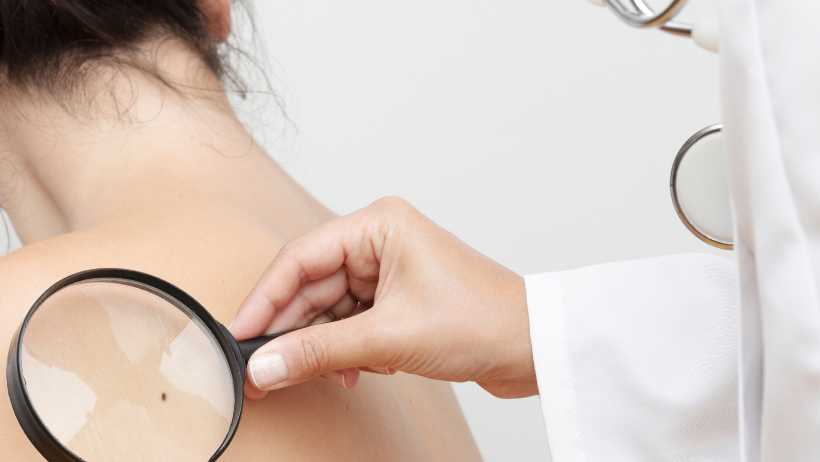
One of the significant effects caused by sun tan is it increases the risk of developing skin cancer. Whether it is indoor tan or outdoor tan, the effect of sun tan is similar. The UV rays in sun causes skin DNA alteration, thereby leading to an increase in skin cancer[4]. The risk of developing melanoma[5], squamous cell carcinoma, or basal cell carcinoma is much higher. The genes of such cancers might also get transferred through generations.
2. Sun Burns
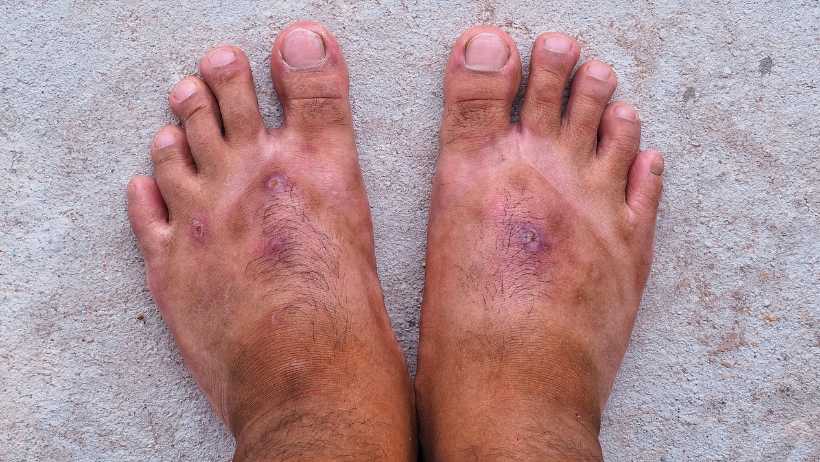
It is one of the side effects of getting a sun tan outdoors. The dangerous sun rays might cause damage to the outermost skin layers that are sensitive and develop irritation and redness. If sunburn worsens, your outer skin layers might peel off after a few days.
3. Actinic Keratosis
Solar keratosis or actinic keratosis occurs after prolonged hours of exposure to harmful UV rays. It can be identified through irregular skin texture and raised bumps on the skin. This condition might also be an early indicator of skin cancer in some people.
4. Weak Immunity
UV rays exposure can take a toll on your immune system and lower its efficiency in safeguarding against infections. It can at times also lead to skin cancers and several other conditions. Your skin might become very sensitive to topical medications and cosmetic products.
5. Premature Ageing
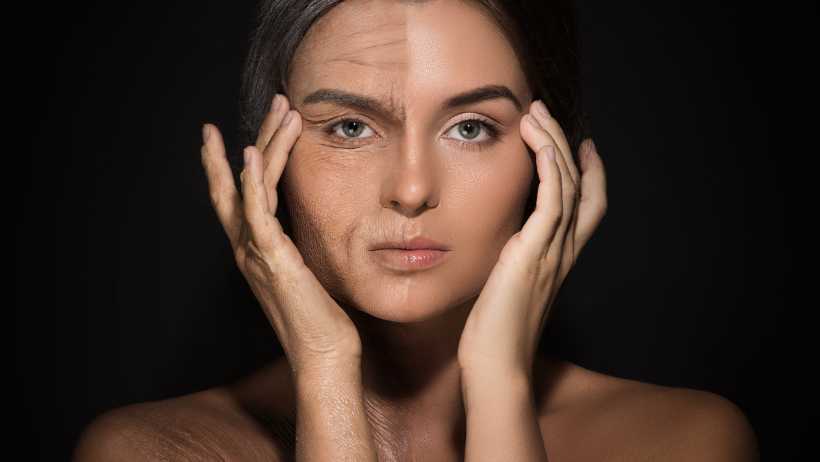
The UV rays from indoor or sun tanning can mess with the natural ageing cycle of your skin cells. If you notice signs like dark spots, fine lines, or wrinkles on your skin all of a sudden, it indicates the side effect of sun tan. Some of you might even develop leathery textured skin patches.
6. Eye Damage
Too much sun tan and UV rays can result in the development of cataracts and photokeratitis. When your cornea, the eye’s outer layer, gets damaged due to the sun’s rays, it causes photokeratitis. You might also feel decreased vision, eye irritation, or eye-burning symptoms. Cataracts make your eye lens cloudy, affecting or reducing your vision.
Prevention of Sun Tan
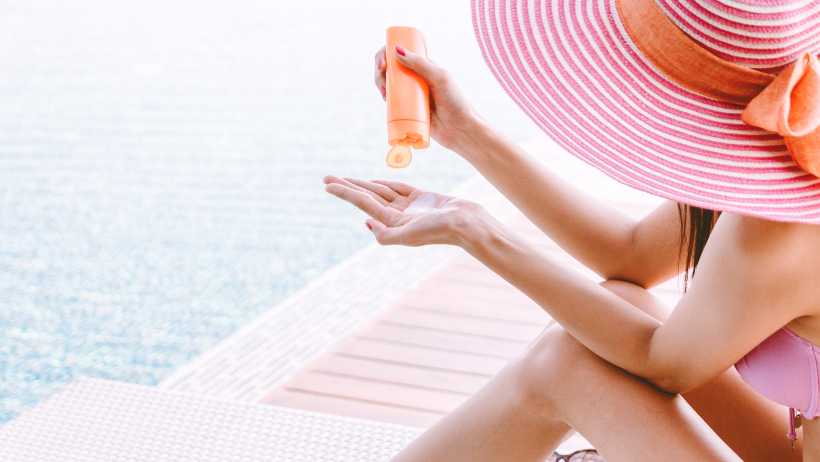
- Cover completely when heading out during the hot summer days.
- Remember your stoles, scarves, sunglasses, and hats with wide brims.
- Do not plan any outdoor activity between 10.00 am – 2.00 pm, as it is the peak time when sunlight is strong.
- Use sunscreen a few minutes before going out and apply it again after a few hours to maintain skin health and avoid tanning[6].
- In summer, satiate your thirst with lots of fruit juices, tender coconut water, and plain water to prevent dehydration. Make sure you drink at least 15 glasses of water and eat water-content-rich fruits like watermelon and vegetables like cucumber.
- If you have to work under the sun as a part of your profession, apply sun protection creams and mineral-based sunscreen once every 20 minutes.
- Wash your face two to three times to keep it free from sweat, oil, and grime.
- Increase your immunity by eating lots of fruits and vegetables. It enhances your skin’s immunity levels and helps in fighting sun damage.
Professional Sun Tan Removal Treatments
These professional treatments are effective in removing the sun tan or can significantly lower the tan effect. Avail these treatments from a trusted skin clinic with trained skin specialists.
1. Chemical Peels
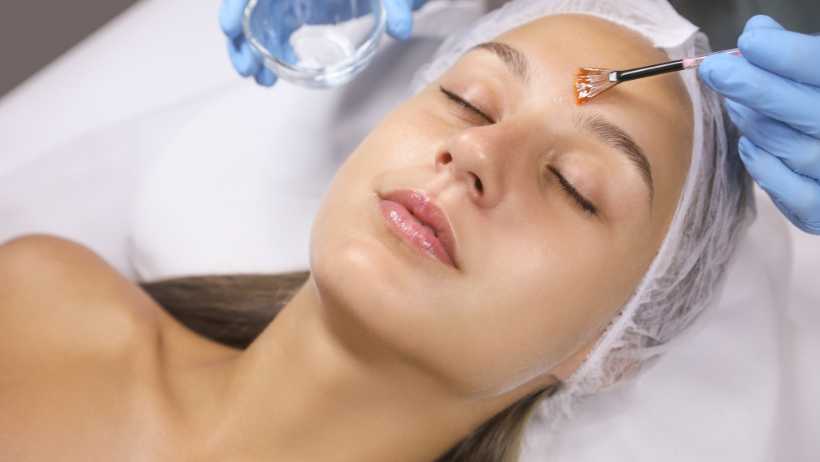
This treatment method is performed by applying the acid solution to the tanned skin, thereby creating a controlled wound site, which would eventually peel away and promote new skin formation. Chemical peels can sting a bit and leave a burning sensation lasting for a couple of minutes after treatment. You can apply OTC products or a cold compress to relieve pain.
This tan removal treatment is a perfect choice for removing those superficial dead layers of your skin which have excess melanin buildup[7]. These chemical peels utilize effective ingredients like phenol or carbolic acid, glycolic acid, salicylic acid, trichloroacetic acid, or lactic acid[8]. Based on their effectiveness and intensity, chemical peels are classified below.
- Deep chemical peel
- Medium chemical peel
- Superficial chemical peel
2. Microdermabrasion
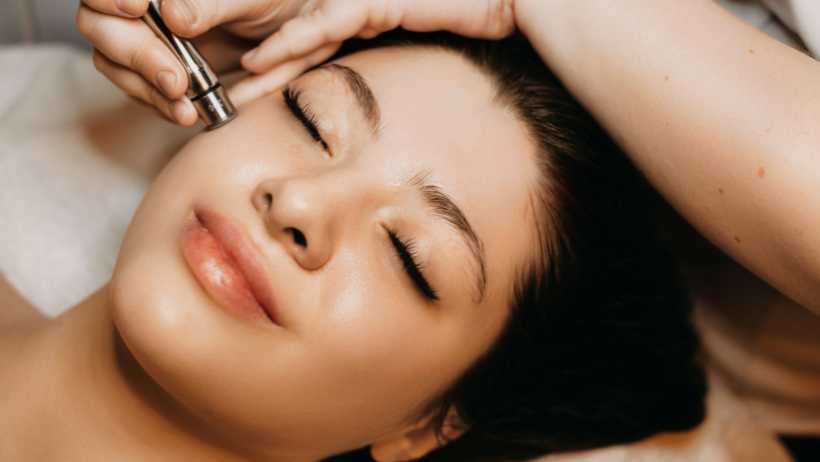
Microdermabrasion treatment for sun tan is performed by eliminating the topmost skin layer by removing it gently. It involves using a custom applicator featuring an abrasive tip equipped with suction action to clear the damaged skin. This session lasts around an hour and has no pain, ruling out the need for an anaesthetic. Your skin might appear tighter and pinkish after this treatment, which is temporary.
This tan removal treatment exfoliates the dead cells having too much melanin pigment. It also helps in the quicker regeneration of fresh skin cells than usual. So, you will have young-looking skin free from tan, tined, and firm. You can choose from two methods of microdermabrasion treatments – Crystal Microdermabrasion and Diamond-tip Microdermabrasion to cater to your sun tan removal needs.
3. Cryotherapy
During Cryotherapy, sun tan and sun spots are effectively removed by freezing the affected skin cells using a liquid nitrogen solution. It is a gentle procedure for sun tan removal and has no pain. You have to spend a few minutes per Cryotherapy session to flaunt visibly brighter skin free from sun tan.
4. Laser Treatment
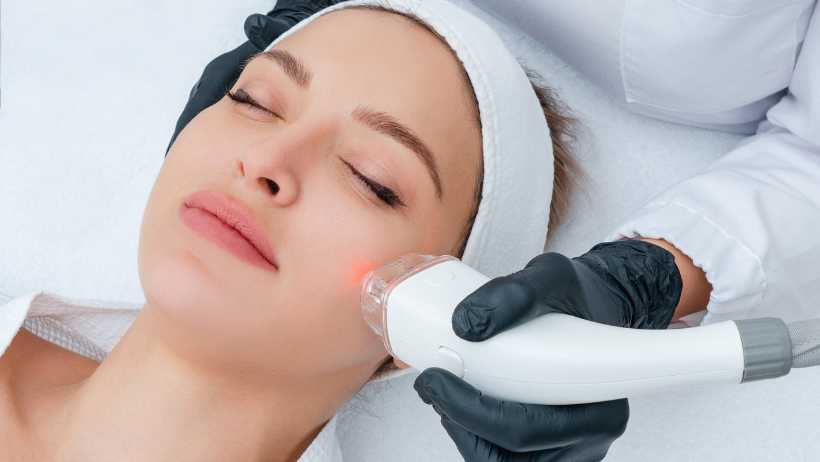
1. IPL laser
You can avail of an IPL laser that uses Intense Pulse Light energy[9] to target the tanned area on the skin. It removes the skin discolouration caused by tanning by heating and breaking down the melanin. A single IPL laser session light lasts around 30 minutes and has no or less pain. The number of laser sessions might depend on the extent of your tan and skin type.
2. Laser Toning
Your dermatologist will perform a laser device to break down the accumulated melanin pigment and eliminate skin tan. When applied to the skin, high-intensity laser light gets converted into heat energy for targeting the chromophore-like melanin pigment without causing damage to the soft tissues surrounding the skin. These laser beams penetrate deep skin layers to clear away excess melanin.
Natural Remedies for Sun Tan Removal
Try these natural remedies to remove the effect of sun tan on your skin.
- Make a mixture with half a teaspoon of honey, 1 tsp of lime juice loaded with bleaching properties and apply on tanned skin. Wash it after 20 – 30 minutes to get rid of sun tan.
- Combine equal parts of potato juice and rice flour to make a smooth paste and apply on the sun tan areas. The bleaching effect of potatoes will lighten your sun tan and sun tan effectively. Leave it for 15 minutes and rinse using cold water.
- Soak some saffron strands in warm milk and leave it aside for two hours. Strain and apply on the tanned skin and wash after 20 minutes. Saffron possesses skin-lightening, soothing properties and bioactive compounds to guard the skin against UV rays.
- Mix a tablespoon of besan flour with a small teaspoon of turmeric powder and mix using curd. Add a few drops of lemon juice. Apply on the sun-kissed skin and leave for 30 minutes. Rinse well to see the de-tan effect.
- Coconut milk is hydrating and nourishing for your skin and contains vitamin C and mild acids to fight tan. Apply coconut milk on the tanned skin using a cotton ball and allow it to dry. Use a mild cleansing bar to wash it off.
Skincare Products for Sun Tan Removal
1. Tan Removal Creams
Tan removal creams are formulated with melanin-lightening ingredients to eliminate the tanned look on your skin’s upper layer. Choosing the best tan removal serum or lotion will help inhibit the enzymatic activities that hinder melanin production by penetrating the deep skin layers.
2. Tan Removal Products with Lightening Actives
These products contain lightening actives and chemical ingredients to fight against the tan and enhance the lightening effect on your skin. Choose any products with one or more lightning actives as the key ingredient.
- Liquorice Extract: This extract of liquorice root has liquidity and glabridin[10] flavonoids[11] capable of removing skin tan and the effects of UVB rays.
- Kojic Acid: It is extracted from a fermented fungus shaped like a mushroom. This sun tan-fighting ingredient prevents melanin production and gives a lightening effect with its deep penetration action.
- Vitamin C: This vitamin in your tan removal lotion performs like an inhibitor of tyrosinase. This enzyme kindles melanin production to remove the effects of skin tanning.
- Niacinamide: This vitamin B3 derivative is useful to remove sun tan and offer skin lightening. It works by lowering the melanocyte number on your skin surface in half to prevent the overproduction of melanin.
3. De-tan Face Pack
De-tan face packs with the effective ingredients listed above help remove the tan effect on the skin exposed to UV rays. Though these products will not lighten the skin, they can help with uneven skin tone.
4. Exfoliation Products
Exfoliating your tanned skin with these products with gentle scrubbing action will eliminate the pigmented dead cells off the skin surface. So, the appearance of tan is visibly reduced, and an even skin tone is achieved. Using scrubs with chemicals like beta or alpha hydroxy acids can dissolve your skin’s pigmented and dead cells.
Summing Up
Protecting your skin against the harmful radiation caused by UV rays is imperative. Though sun tan will fade off eventually when coupled with natural remedies and de-tan products, it will take a long time. If you want to get rid of the tan marks quickly to look good or have sensitive skin that has sustained a profound tanning effect, contact Kolors immediately. Kolors Healthcare offers safe and professional sun tan removal treatments performed by skilled and trained dermatologists to remove the pigmented dead cells and give you glowing skin.
References
- https://www.fda.gov/radiation-emitting-products/tanning/risks-tanning
- National Library of Medicine (NLM) – https://medlineplus.gov/tanning.html
- Ward WH, Farma JM – https://www.ncbi.nlm.nih.gov/books/NBK481857/table/chapter6.t1/
- Department of Psychology, Stony Brook University, Stony Brook, NY 11794, USA – https://www.ncbi.nlm.nih.gov/pmc/articles/PMC9272582/
- Department of Oncology-Pathology, Karolinska Institutet, Stockholm, Sweden – https://www.ncbi.nlm.nih.gov/pmc/articles/PMC3672405/
- American Academy of Dermatology – https://www.aad.org/public/everyday-care/sun-protection/shade-clothing-sunscreen/sunscreen-faqs
- Maulana Azad Medical College and Lok Nayak Hospital, New Delhi, India – https://www.ncbi.nlm.nih.gov/pmc/articles/PMC3461803/
- Dermatology Clinic, University Clinical Center of Kosovo, Pristina – https://www.ncbi.nlm.nih.gov/pmc/articles/PMC4720453/
- Departments of Surgery and Biomedical Engineering, Beckman Laser Institute and Medical Clinic, University of California, Irvine, Irvine, California – https://www.ncbi.nlm.nih.gov/pmc/articles/PMC3982879/
- Department of Traditional Chinese Medicine, Huizhou Municipal Central Hospital, Guangdong China – https://www.ncbi.nlm.nih.gov/pmc/articles/PMC9123664/
- https://www.sciencedirect.com/topics/medicine-and-dentistry/glabridin

